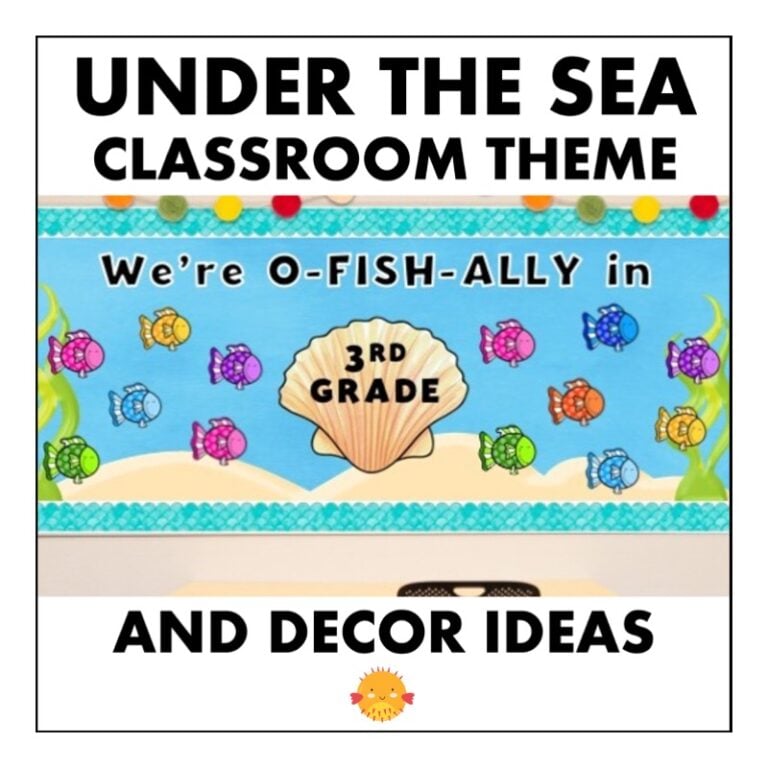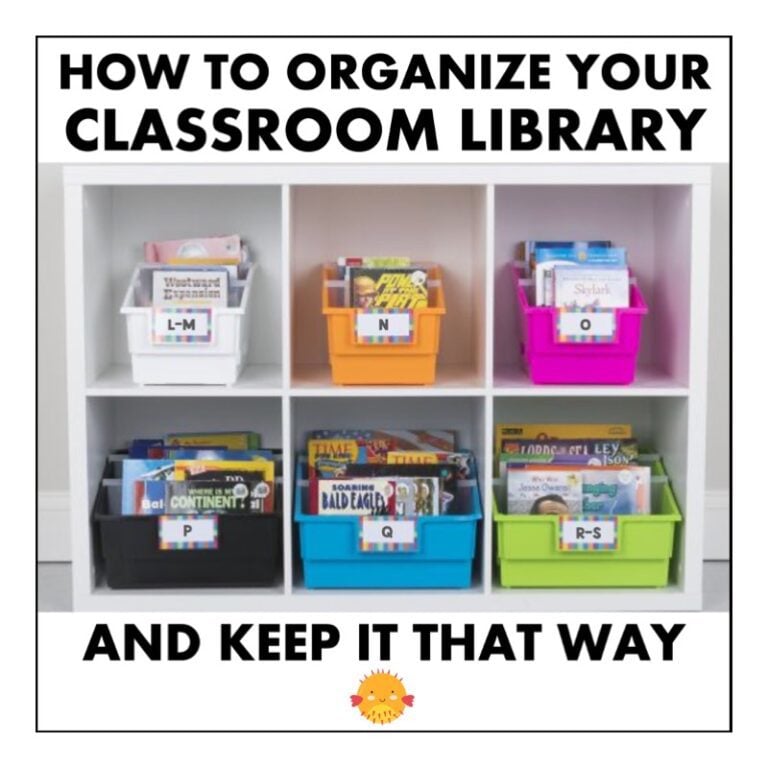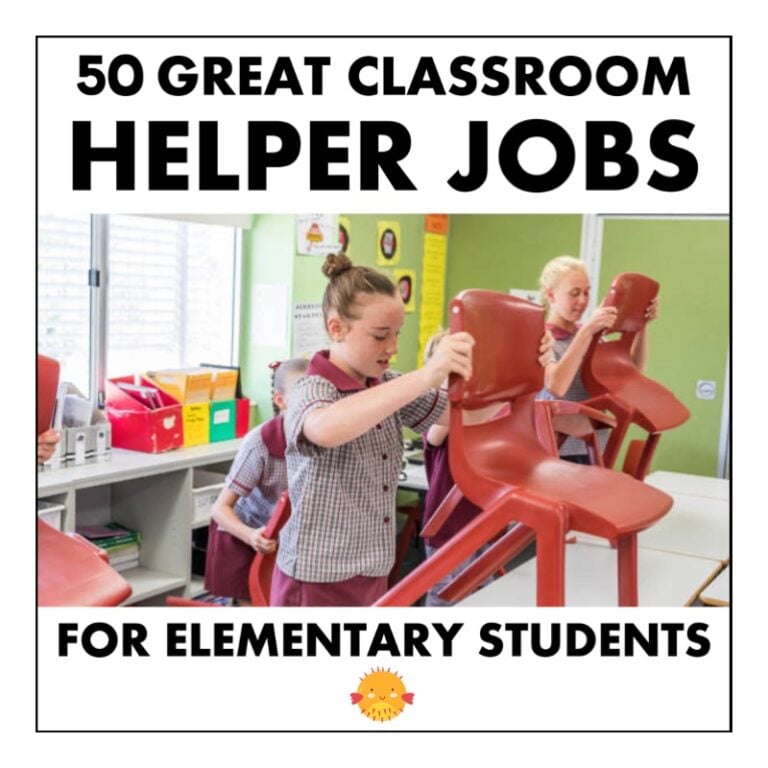
Special Education Classroom Setup: Design a Structured Space to Support Learning
It’s that time of year when we’re all setting up our classrooms for our new students. When they walk in on the first day of school, you want your room to look bright and inviting, right? But if you’re a special education teacher, that means more than just choosing a theme or picking out cute decor.
.
Effective Special Education Classroom Setup
There are 3 really important ingredients for designing a classroom environment that supports special education students:
- Classroom Layout
- Classroom Furniture
- Wall Space
.
The key to a good special education classroom setup is: Student Needs First
We all like pretty. We all like the latests trends. But remember, our students come to school to learn and some aspects of our classroom design can either help or hinder that.
So let’s look at the three aspects of special education classroom setup that have the most impact. (General education teachers – If you teach in an inclusive classroom or have ESE students that push-in, these tips will help you too.)
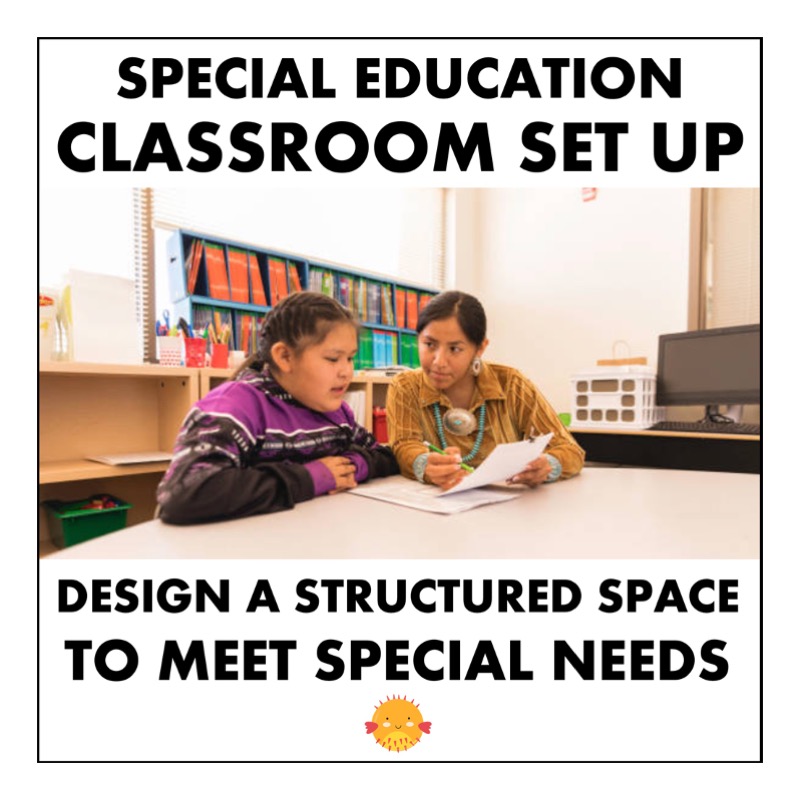
Classroom Layout
When you set up your classroom for the year, the first thing you probably think about is where you want certain things like your classroom library, your teacher desk, your computer station, and your circle time area. As you consider these things, focus on the space between each area. Can your students maneuver between them? Is there room for a wheelchair or for two people to walk at the same time (such as when a student with a physical disability needs assistance to get somewhere)?
Look at where your adult-attended spots are in relation to independent work areas. I suggest putting your small group table or your para’s table near the door. If someone knocks, you can easily answer it without walking away from your group of students. If you have a “runner” in your class, the door won’t be as easy to access. What about your time-out or calm-down spot? It should be in a quiet area of the room, near an adult – not right next to your independent work stations, sensory corner, or other stimulating activities.
Consider how your students will rotate through the room for different activities. Do you really want your life skills kitchen area right next to your small groups or will that be distracting? If you plan to have snack right after circle time, put your snack table near your rug area so the whole class doesn’t have to move across the room to transition between activities.
If you have a para or two, make sure you give them their own dedicated space. They will need their own spot to keep personal items and the instructional materials they’ll be using. Your para should feel at home in the room, not like a visitor. You might also have other service providers coming into you room. Make sure they have a space to work as well.
.

Your special education classroom setup should include spaces for paras and other adults who work with students.
.
I usually just use chart paper to plan out my classroom layout. I make sticky notes for each large item in my room and use sticky flags for desks. I can move them around on my chart paper multiple times until it looks good. If that’s not something you enjoy, try this free online classroom planner to design your special education classroom setup – Kaplan FloorPlanner
.
Classroom Furniture
You kind of have to work with what you’ve got when it comes to teaching. Your furniture is your furniture. But there are some things you can and should do when setting up your classroom.
Desks – If your students will have individual desks, I suggest using floor tape to mark off their spaces. A big rectangle on the floor around their desk and chair is all you need. This shows them where their personal space begins and ends. It also shows where their chair needs to stay at all times. If a student uses assistive technology such as a communication device, make sure they have a spot to keep it handy without taking up all of their work space.
Tables – I also like to use colored tape on my table tops to mark off personal space. Check the height of your tables. Can your students sit and work at the table comfortably. Are your tables far enough away from other pieces of furniture to accommodate a wheelchair or walker?
Bookshelves and Dividers – Most general education classroom teachers enjoy their wide open spaces. But in a special education classroom, it often works better to have clearly defined areas and physical boundaries. I find that it really helps with classroom management. Bookshelves work great for dividing up your space! Think of them as mini moveable walls that also happen to hold stuff.
.
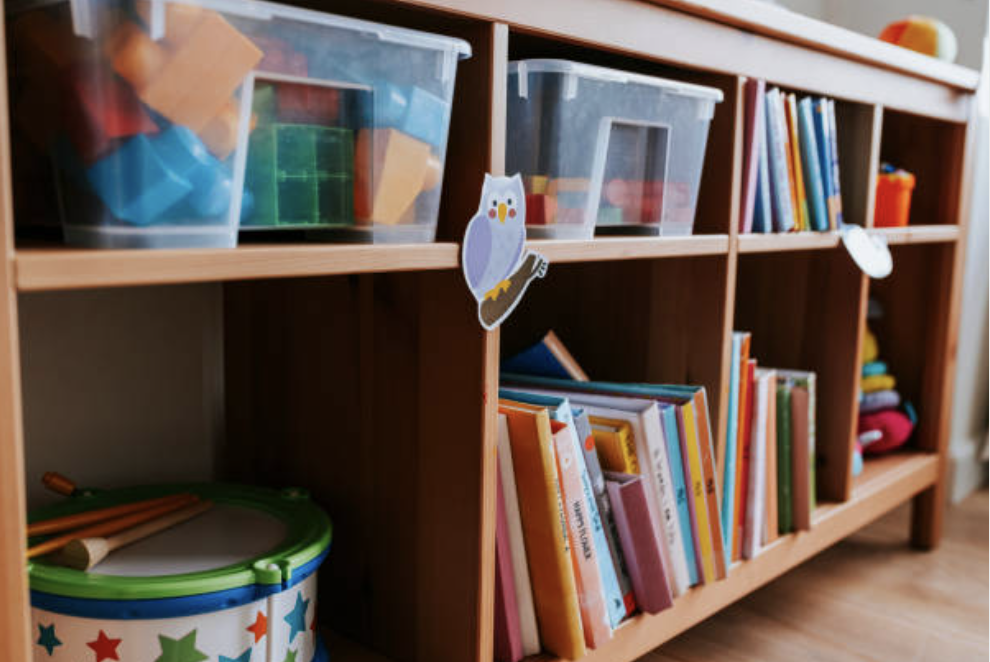
.
If some of your students receive related services like physical therapy in the classroom, having a separate spot for that is ideal. If you have the space, go ahead and block off an area for those service providers to do their job.
Chairs – If you have hard surface floors, I highly recommend putting tennis balls on your chair legs. They stop the scraping noises when chairs are moved around which can be highly distracting and even a behavior trigger for some kids with sensory issues. (Check with your local tennis club for old balls that they might donate.) You can also buy felt at your local craft store. Cut it into squares and secure to your chair lets with rubber bands.
Rug – This isn’t technically furniture, but I do suggest you put some thought into your rug if you’ll be having circle time. Students will need a designated area to sit. I find it best to mark off their personal space boundaries. You can use floor tape again or rugs with colored squares. I like interlocking foam mats because each block is a defined space and you can configure them any way you like – or even use them as separate floor mats for each child.
.
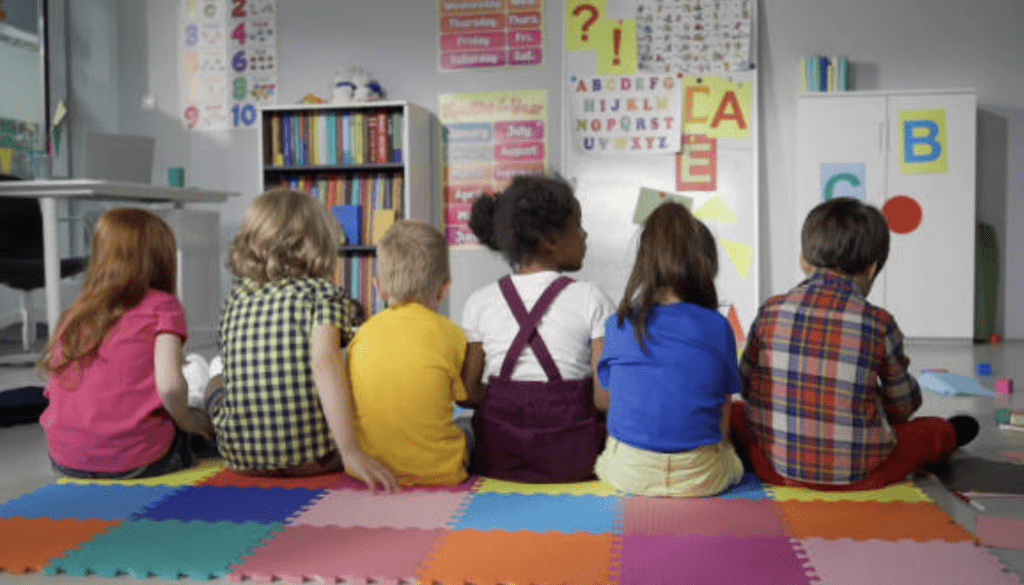
.
Wall Space
Wall space is the big one when it comes to special education classroom setup! It is so easy to get carried away hanging all kinds of cute posters and sayings on your walls. Then there’s your alphabet, number line, anchor charts, schedules, and who knows what else.
The truth is – One of the best ways to make sure your students can’t focus is to hang an abundance of stuff all over your walls. Now multiply that effect by 10 if you teach SPED.
When planning how to use wall space, don’t just think of decor. Keep it focused on visual aids that help students learn. Here are some things you should hang on your walls:

Daily Schedule
Knowing what is coming up next in their day is super important to many kids, especially those on the spectrum. Have a consistent, predictable schedule removes a lot of anxiety.
A visual schedule on the wall helps with transitions because there are no surprises. Make sure your schedule is large enough for students to see with easy to identify pictures for your non-readers. Even if they can’t tell time, they will be able to see that first we having morning meeting, then we do stations, then it is snack time.
.
Rules and Behavior Plan – Special education is geared toward the individual needs of students. This is especially true when it comes to behavior plans. Some kids in your class will likely have an individualized behavior chart of some type that they carry with them or keep on their desk. But you will still have general classroom expectations and rules that should be posted. Make them big and easy to read with pictures for visual support. You might also have a chart for positive reinforcements displayed along side your rules.
Visual Supports for Learning – These will vary depending on your grade level. Only hang items your students need right now. If you don’t teach subtraction until January, you don’t need subtraction anchor charts hanging up in September. Your students shouldn’t have to sift through visual clutter to find the information they need. It’s confusing, frustrating, and distracting. Have a designated spot for your math aids and a spot for your reading aids, so students know where to look.
Here are a few visual aids that you’ll want to keep up all year:
- alphabet
- number line
- word wall
- visual cues (action and object cue cards)
- calendar and corresponding visual aids for circle time
.
Once you’ve hung up all the essentials, then you can start thinking about decor if you have more space. But remember to keep your special education classroom setup simple and limit the visual distractions.

